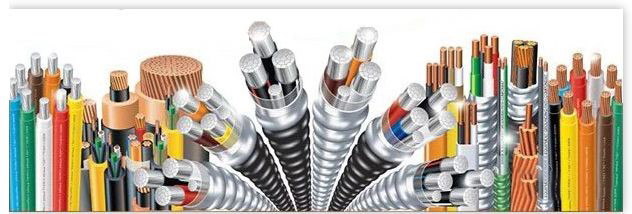News
How to Select Appropriate Power Cables for Refrigeration Equipment
The installation of refrigeration equipment is a very rigorous work, and its installation will greatly affect the performance and even the work of the machine. Therefore, when installing, the engineer needs to select the appropriate power cables. However, the selection of power cables is also a science. Larger selection will cause economic waste, and smaller selection will cause potential safety hazards. How big is it to be safe and economical? This article discusses the selection of power cables for refrigeration equipment.
What is power cable?
Definition of power cables: power cables are used to transmit electric (magnetic) energy, information and realize the conversion of electromagnetic energy. In the broad sense, power cables are also referred to as cables. In the narrow sense, cables refer to insulated cables, which can be defined as an assembly of the following parts: one or more insulated cores, and their respective possible cladding, total protective layer and outer protective layer. The cable can also have additional uninsulated conductors to transmit electric (magnetic) energy, information and wire products to realize electromagnetic energy conversion.

Basic structure of power cables:
1. Conductor: the object conducting current. The specification of power cable is expressed by the cross-section of conductor.
2. Insulation: the outer insulation material shall be subject to its withstand voltage.
Classification of power cables:
1. According to voltage level:
(1) Low-voltage (LV) cable: It is suitable for fixed laying on transmission and distribution lines with 50Hz AC and rated voltage of 3KV and below for power transmission.
(2) Medium and low voltage (MV and LV) cable: it generally refers to 35KV and below cables, such as polyvinyl chloride (PVC) insulated cables, polyethylene (PE) insulated cables, cross-linked polyethylene (XLPE) insulated cables, etc.
(3) High voltage (HV) cable: it generally refers to 110KV and above cables, such as PE cables and XLPE insulated cables.
(4) Extra-high-tension (EHV) cable: 275 - 800KV cables.
(5) Ultra-high-tension (UHV) cable: 1000KV and above cables.
2. According to insulating materials:
(1) Oil-impregnated paper insulated power cables use oil-impregnated paper as insulation. It has the longest application history with the advantages of safety, reliability, long service life and low price. The main disadvantage is that the laying is limited by the drop. Since the development of non-drip cable, the problem of drop limit has been solved, and the oil-impregnated paper insulated power cable has continued to be widely used.
(2) Plastic insulated power cables use extruded plastic as insulation. Common plastics include PVC, PE and XLPE. Plastic cable has simple structure, convenient manufacturing and processing, light weight, convenient laying and installation, and is not limited by the laying drop, so it is widely used as MV and LV cable, and there is a trend of replacing adhesive oil-impregnated paper insulated power cable. Its biggest disadvantage is the existence of dendronized breakdown, which limits its use at higher voltage.
(3) The insulation of the rubber insulated power cable is made of rubber plus various additives, which are fully mixed and extruded onto the conductive core, and then vulcanized at elevated temperature. It is soft and flexible, and suitable for occasions with frequent movement and small bending radius.
Calculation of power cables of refrigeration equipment
When selecting the power cables of the refrigeration equipment, in order to select the appropriate size and achieve the economical and safe goal, a simple estimation can be made. There is a pithy formula of safe working current of Al cable among electricians in China:
Less 10, by 5; (For the cable less than 10mm2, current-carrying capacity is the cable section multiplies by 5.)
100 more, by 2; (For the cable more than 100mm2, current-carrying capacity is the cable section multiplies by 2.)
35, triple it; (For the cable of 35mm2, current-carrying capacity is the cable section multiplies by 3.)
25, quadruple; (For the cable of 25mm2, current-carrying capacity is the cable section multiplies by 4.)
70 and 95, both double and half; (For the cable of 70 mm2 and 95mm2, current-carrying capacity is the cable section multiplies by 2.5.)
0.8 for threading; (For the cable in threading pipe, current-carrying capacity decrease by 20%.)
0.9 for hot; (For the cable in hot environment, current-carrying capacity decrease by 10%.)
Cu goes one step up; (For copper cable with the same section area, current-carrying capacity increase by 1 level, e.g., 2.5mm2 Cu cable and 4mm2 Al cable have the same current-carrying capacity.)
Bare wire half more. (For the bare wire, current-carrying capacity increase by 50%.)
Please be noted that this is just for quick and rough estimation in theory, and in actual calculation, factors such as the length of the conductor, standard code and etc. should also be considered. And the specific current-carrying capacity shall be subject to the cable manufacturer.
We can provide design and solution for "Preferref" dry coolers and "Yongsung" quick freezers, as well as the calculation of power cables of our equipment.

